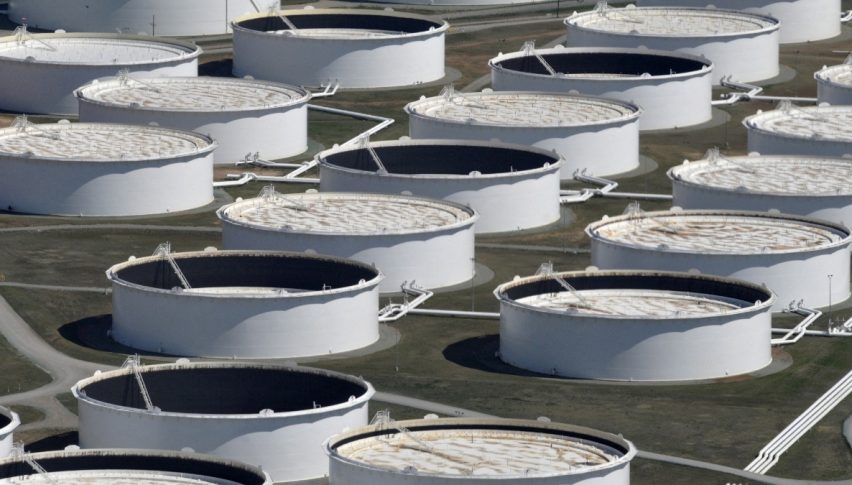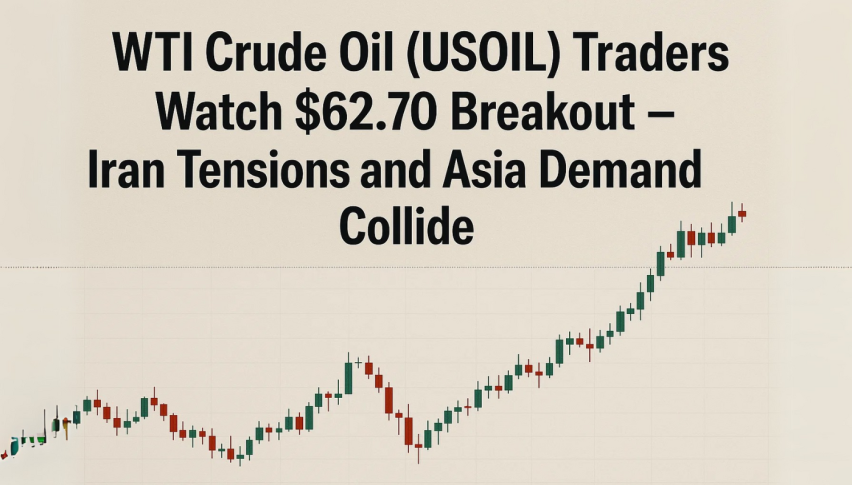Oil Prices Resume Uptrend, With WTI Above $81 on EIA Inventory
Yesterday Oil prices fell after reaching the highest level since early May, but crude Oil is back up today, driven by summer demand optimism

Yesterday crude oil prices fell after reaching the highest level since early May, but crude Oil is back up today, driven by summer demand optimism and concerns about escalating hostilities in the Middle East. Both Brent oil futures and U.S. West Texas Intermediate (WTI) crude declined by 0.1% to $81.50 a barrel, resulting in a doji candlestick—a bearish reversal signal following the recent positive momentum. Despite this, buyers regained control today, pushing oil prices up by around $1.

Oil prices made half of the gains ahead of the US weekly inventory report, reflecting a market anticipating further insights into supply dynamics. The latest EIA weekly crude oil inventory report showed a larger-than-expected draw of 2,547K barrels, compared to the anticipated 2,200K barrels, and a stark contrast to the prior week’s increase of 3,730K barrels. Gasoline inventories also fell significantly by 2,280K barrels, defying expectations of a 620K barrel build, while Distillates saw a decline of 1,726K barrels against an expected increase of 261K barrels.
WTI Oil Chart Daily – MAs Have Been Broken
That helped Oil price move further to the upside, claiming the $81 level. Despite signs of cyclical weakness in the global economy, OPEC+ appears to have effectively addressed these concerns by maintaining stringent output cuts. These measures have helped stabilize prices and support the market despite economic uncertainties. US producers have been notably slow in stepping up production to fill the gap left by OPEC+ cuts.
This cautious approach is influenced by OPEC’s strategic plan to gradually reintroduce barrels into the market over the next year. By managing supply in this measured manner, OPEC+ aims to prevent a sudden influx of oil that could destabilize prices. The result of these coordinated efforts has been an extraordinary rise in oil prices, with current levels reaching their highest since April 30. This surge reflects not only the effective management of supply constraints by OPEC+ but also the market’s response to the anticipated gradual return of additional barrels.
EIA Weekly Crude Oil Inventories
-
Crude Oil:
- Actual: -2,547K barrels
- Expected: -2,200K barrels
- Prior: +3,730K barrels
-
Gasoline:
- Actual: -2,280K barrels
- Expected: +620K barrels
-
Distillates:
- Actual: -1,726K barrels
- Expected: +261K barrels
- Production: Unchanged at 13.2 million barrels per day (mbpd)
-
Refinery Utilization:
- Actual: -1.5%
- Expected: +0.1%
API Reading (Tuesday):
- Crude Oil: +2,264K barrels
- Gasoline: -1,077K barrels
- Distillates: +538K barrels
Production remained steady at 13.2 million barrels per day. However, refinery utilization dropped by 1.5%, contrary to the forecasted slight rise of 0.1%. Earlier in the week, the API report had indicated a bearish outlook with a crude oil inventory increase of 2,264K barrels, while gasoline and distillates reported declines of 1,077K and an increase of 538K barrels respectively. Despite this bearish API reading, the market has largely shrugged it off, focusing instead on the more substantial drawdowns reported by the EIA.
US WTI Crude Oil Live Chart
- Check out our free forex signals
- Follow the top economic events on FX Leaders economic calendar
- Trade better, discover more Forex Trading Strategies
- Open a FREE Trading Account



